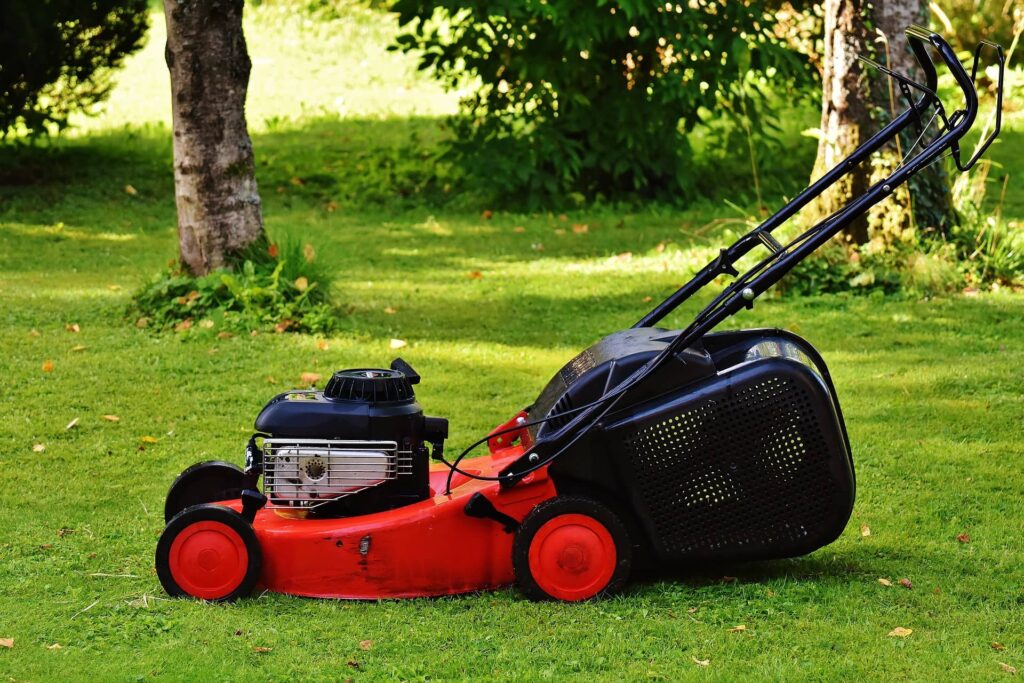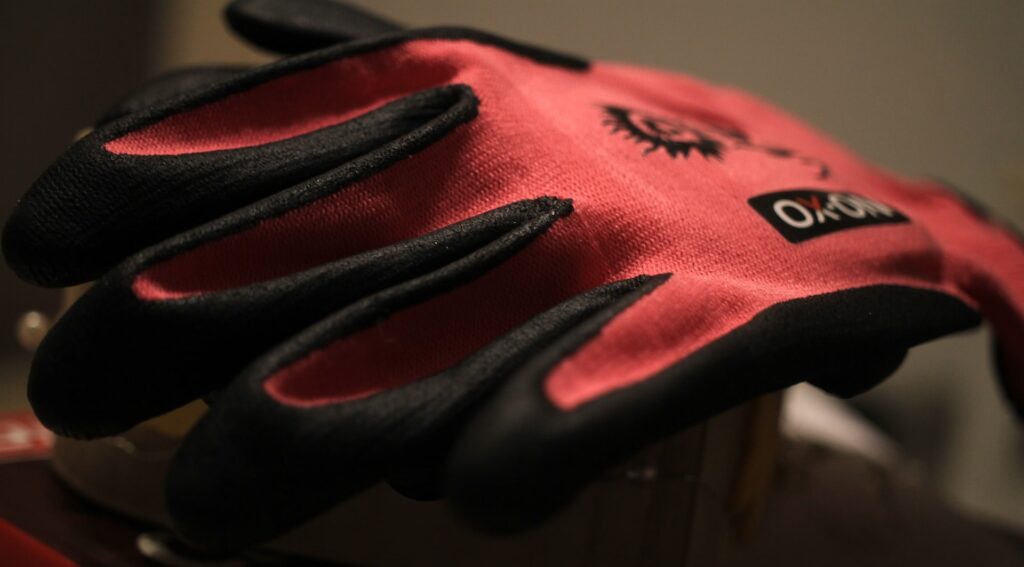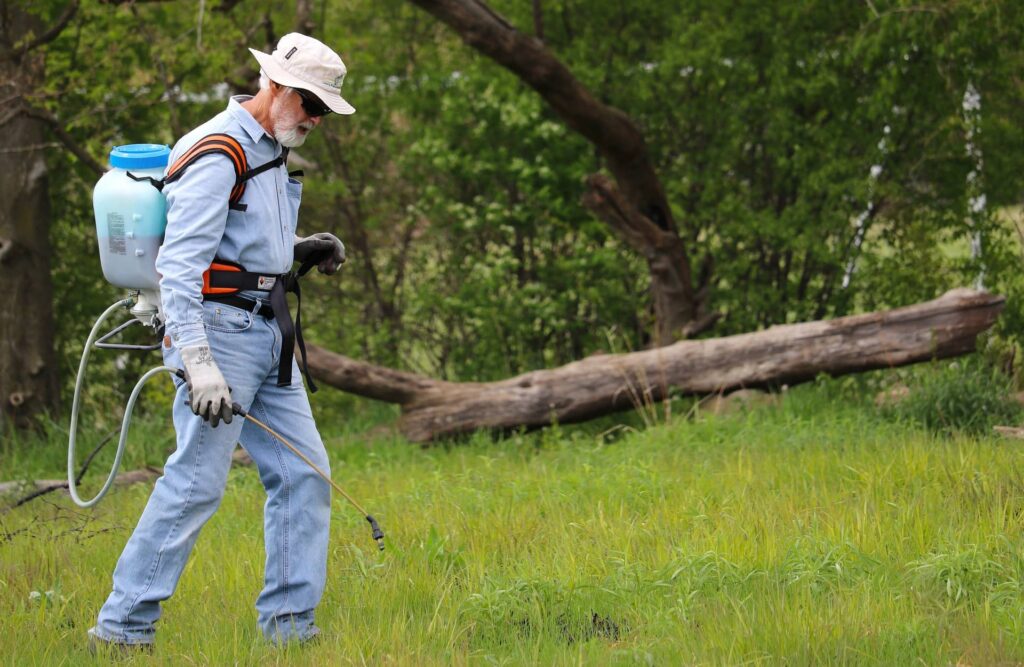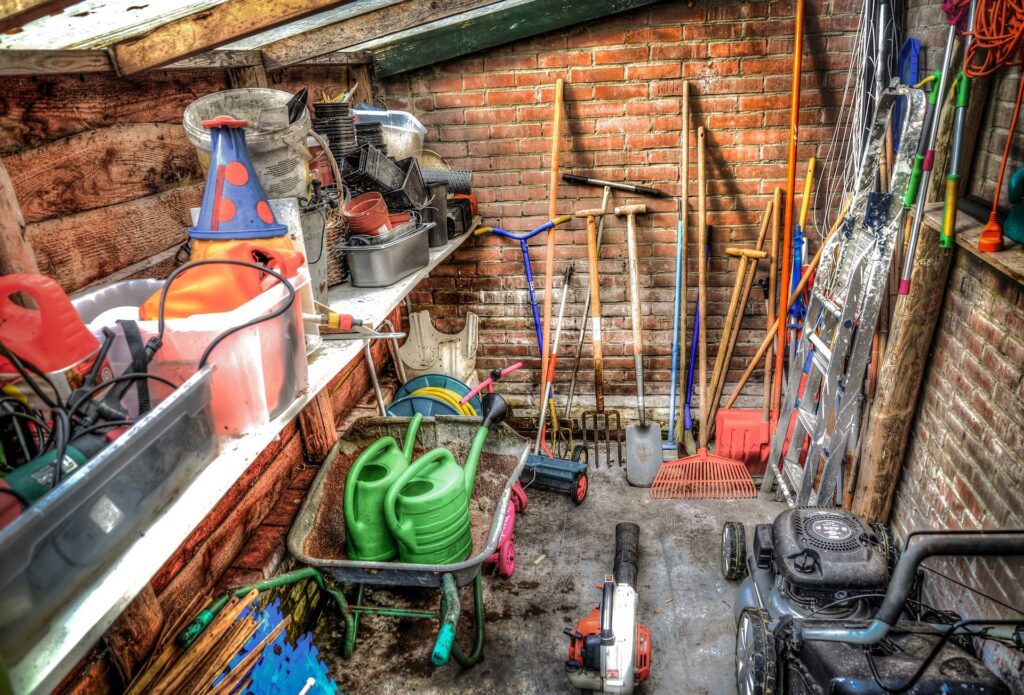Maintaining a lush, healthy lawn requires more than just regular mowing. It demands a well-equipped arsenal of lawn care tools to tackle various tasks throughout the seasons. Whether you’re a seasoned landscaper or a DIY enthusiast, understanding the right tools for the job can make all the difference in achieving that picture-perfect yard. In this comprehensive guide, we’ll explore the essential tools needed for lawn care, from basic maintenance equipment to specialized gear for advanced landscaping techniques.
The first thing to understand is that there really is no difference in tools between DIY and professional lawn care. The basics are all the same. Sure, professionals may use different brands and be slightly more expensive, but the basics are consistent.
Here’s the key takeaways table rewritten in markdown format:
| Key Takeaways: Tools Needed for Lawn Care |
|---|
| 1. Essential tools: lawn mowers, trimmers, edgers, leaf blowers |
| 2. Choose mower by lawn size: push (small), self-propelled (medium), riding (large) |
| 3. String trimmers and edgers crucial for detailing and hard-to-reach areas |
| 4. Spreaders ensure even distribution of fertilizer and seeds |
| 5. Basic hand tools: rakes, shovels, pruners necessary for various tasks |
| 6. Soil health tools (testing kits, aerators) improve lawn vitality |
| 7. Safety gear (gloves, eyewear, ear protection) essential for all activities |
| 8. Proper tool maintenance extends equipment life and ensures performance |
| 9. Consider eco-friendly options like manual or electric tools when possible |
| 10. Start with essentials, gradually build toolkit as needed |
Introduction to Lawn Care Tools
A well-manicured lawn is the pride of many homeowners, serving as a verdant canvas that enhances the overall appearance of a property. However, achieving and maintaining that perfect green expanse requires more than just enthusiasm—it demands the right set of tools. Proper equipment is one of the essential lawn care basics that not only makes the job easier but also ensures better results, promoting healthier grass growth and a more attractive landscape.
The world of lawn care tools is vast, ranging from simple hand tools to sophisticated power equipment. Each tool serves a specific purpose in the lawn care process, from cutting and trimming to fertilizing and aerating. By understanding the function and importance of each tool, you can create a well-rounded toolkit that addresses all aspects of lawn maintenance.
Essential Tools for Basic Lawn Maintenance

1. The Lawn Mower: The Heart of Your Lawn Care Arsenal
At the core of every lawn care routine is the trusty lawn mower. This indispensable tool is responsible for the most fundamental task in lawn maintenance: keeping the grass at an optimal height. Let’s delve into the various types of lawn mowers and their unique features:
Types of Lawn Mowers
- Push Mowers: Ideal for smaller lawns, these manually-operated mowers are eco-friendly and provide a good workout.
- Self-Propelled Mowers: These power-driven mowers reduce physical effort and are perfect for medium-sized lawns.
- Riding Mowers: Designed for larger properties, riding mowers offer comfort and efficiency for expansive grass areas.
The Reel Thing: Understanding Reel Mowers
Reel mowers, a subset of push mowers, offer unique advantages:
- Reel Cutting Mechanism: Provides a clean, scissor-like cut that’s gentler on grass blades.
- Lawn Stripes: Creates attractive striping patterns on your lawn.
- Adjustable Cutting Height: Allows for precise control over grass length.
- Ease of Operation: Simple design means fewer mechanical issues.
- Quiet Operation: Perfect for early morning mowing without disturbing neighbors.
- Versatility: Effective on various grass types.
- Environmentally Friendly: No emissions and minimal carbon footprint.
Choosing the Right Mower for Your Lawn
Selecting the appropriate mower depends on several factors:
| Lawn Size | Recommended Mower Type |
|---|---|
| Small (< 1/4 acre) | Push or Reel Mower |
| Medium (1/4 – 1/2 acre) | Self-Propelled Mower |
| Large (> 1/2 acre) | Riding Mower |
Consider your lawn’s terrain, obstacles, and your physical capabilities when making your choice.
Maintenance Tips for Lawn Mowers
To keep your mower in top condition:
- Clean the deck after each use
- Sharpen blades regularly
- Change the oil and air filter as recommended
- Tighten loose bolts and replace worn parts
- Store in a dry place during off-seasons
2. Trimmers and Edgers: Detailing for a Manicured Finish
While mowers handle the bulk of lawn cutting, trimmers and edgers are essential for those hard-to-reach spots and creating crisp edges along walkways and flower beds.
String Trimmer
Also known as a weed wacker or weed eater, the string trimmer is versatile and crucial for lawn detailing.
Types of String Trimmers:
- Gas trimmers: Powerful and mobile, ideal for larger properties
- Electric trimmers: Quieter and eco-friendly, best for smaller yards
- Cordless trimmers: Offer mobility without the hassle of a cord
Edger
An edger creates clean, defined lines between your lawn and hardscaping elements like driveways and sidewalks.
Benefits of Using an Edger:
- Creates a professional, manicured look
- Prevents grass from encroaching on paved areas
- Improves overall landscape aesthetics
Trimming vs. Edging
While both tools contribute to lawn detailing, they serve different purposes:
- Trimming: Cutting grass in hard-to-reach areas (around trees, fences, etc.)
- Edging: Creating a clean separation between lawn and non-lawn areas
Proper Usage and Safety Precautions
When using trimmers and edgers:
- Wear protective eyewear and closed-toe shoes
- Clear the area of debris before starting
- Maintain a consistent cutting height
- Keep the tools well-maintained for optimal performance
3. Leaf Blower: Streamlining Debris Cleanup

A leaf blower, also known as a garden blower or outdoor blower, is indispensable for quick cleanup of leaves, grass clippings, and other yard debris.
Types of Leaf Blowers
- Handheld Blowers: Lightweight and easy to maneuver
- Backpack Blowers: Offer more power and comfort for longer jobs
- Wheeled Blowers: Best for large properties and heavy-duty tasks
Benefits of Using Leaf Blowers
- Saves time compared to manual raking
- Effective on various surfaces (grass, pavement, gravel)
- Can also be used to clear light snow or dry debris from gutters
Safety Measures
- Always wear eye and ear protection
- Be mindful of wind direction to avoid blowing debris towards people or property
- Use at appropriate times to avoid disturbing neighbors
4. Spreader: Evenly Nourishing Your Green Canvas
A spreader is crucial for applying fertilizer, seeds, and other lawn treatments evenly across your yard.
Types of Spreaders
- Drop Spreaders: Ideal for precise application in smaller areas
- Broadcast Spreaders: Cover larger areas more quickly, but with less precision
Selecting the Right Spreader for Your Needs
Consider the size of your lawn and the type of products you’ll be applying. For most homeowners, a broadcast spreader offers a good balance of efficiency and coverage.
Proper Calibration and Usage
- Read the product label for recommended settings
- Fill the hopper on a solid surface to avoid spills
- Walk at a consistent pace for even distribution
- Overlap slightly on each pass to ensure full coverage
Tips for Even Fertilizer Distribution
- Apply half the recommended amount in one direction, then the other half perpendicular to the first application
- Water the lawn after applying fertilizer to help it absorb into the soil
5. Gloves: Protecting Your Hands from the Ground Up

Quality gardening gloves are essential for protecting your hands during lawn care tasks.
Choosing the Right Material for the Task
- Leather: Durable and puncture-resistant, ideal for handling thorny plants
- Cotton: Breathable and comfortable for light tasks
- Nitrile-coated: Offers water resistance and good grip
Importance of Hand Protection
Proper gloves not only prevent cuts and blisters but also protect against exposure to chemicals, fertilizers, and potential allergens in the garden.
6. A Way to Water: Nurturing Your Lawn
Proper watering is crucial for maintaining a healthy lawn. Here are the essential watering tools:
Hose and Watering Can
- Choose a durable, kink-resistant hose
- Opt for a watering can with a removable sprinkler head for versatility
Sprinkler Systems
Types of sprinklers include:
- Oscillating sprinklers
- Impact sprinklers
- Rotating sprinklers
Smart Watering Solutions
Consider installing a smart irrigation controller to optimize water usage based on weather conditions and soil moisture levels.
Basic Yard Tools

In addition to power equipment, a set of basic hand tools is essential for various lawn care tasks.
Hand-held Shovel
Perfect for planting, transplanting, and working in tight spaces.
Full-Size Shovel
- Long-Handled Spade Shovel: Ideal for digging and edging
- Snow Shovel: Essential for winter maintenance in colder climates
Rakes
- Leaf Rake: For gathering leaves and light debris
- Soil Rake: For leveling soil and spreading materials
Cutting Tools
- Hand Pruner: For trimming small branches and dead-heading flowers
- Lopper: For cutting thicker branches
- Hedge Shear: For shaping hedges and bushes
- Soil Knife: A versatile tool for digging, cutting roots, and planting
Soil and Grass Health Tools
Soil Testing Kit: Unveiling the Secrets Beneath the Surface
Understanding your soil composition is crucial for maintaining a healthy lawn. A soil testing kit helps you determine:
- pH levels
- Nutrient content
- Soil type
Based on the results, you can adjust your fertilization and soil amendment strategies accordingly.
Aerator: Breathing Life into Compacted Soil
Aeration is vital for maintaining a healthy lawn, especially in high-traffic areas.
Benefits of Lawn Aeration:
- Improves air circulation in the soil
- Enhances water and nutrient absorption
- Reduces soil compaction
- Promotes stronger root growth
Types of Aerators:
- Spike aerators
- Core or plug aerators (more effective)
For most homeowners, renting an aerator once or twice a year is more cost-effective than purchasing one.
Fertilizing and Seeding Equipment
Lawn Seeder: Sowing the Seeds of a Healthy Lawn
Overseeding is an important technique for maintaining a lush, thick lawn.
Importance of Overseeding:
- Fills in bare or thin patches
- Introduces newer, more resilient grass varieties
- Improves overall lawn density
Choosing the Right Seed Spreader:
- Drop seeders for precise application
- Broadcast seeders for larger areas
Techniques for Successful Overseeding:
- Mow the lawn short before seeding
- Rake to remove debris and loosen soil
- Apply seed evenly using a spreader
- Lightly rake to ensure seed-to-soil contact
- Water frequently but lightly until germination
Weed Control Tools

Backpack Sprayer: Precision in Pest Control
A backpack sprayer allows for targeted application of herbicides and other lawn treatments.
Types of Herbicide Sprayers:
- Manual pump sprayers
- Battery-powered sprayers
Safety Precautions When Using Herbicides:
- Always read and follow label instructions
- Wear appropriate protective gear (gloves, goggles, long sleeves)
- Apply on calm days to prevent drift
- Keep children and pets away from treated areas until dry
Selective vs. Non-selective Herbicides:
- Selective herbicides target specific weed types
- Non-selective herbicides kill all vegetation they contact
Remeber that regardless of what types of pesticides and sprayers you choose to use, you should always follow the necessary steps to make sure that you use them safely.
Manual Weed Pullers: Hands-on Precision
For those who prefer a chemical-free approach, manual weed pullers offer a precise way to remove weeds.
Pros of Manual Weed Pulling:
- Environmentally friendly
- Allows for targeted removal without damaging surrounding grass
- Provides immediate results
Cons of Manual Weed Pulling:
- Time-consuming for large areas
- May not remove the entire root system of some weeds
Integrating manual and chemical weed control methods often provides the best results for overall lawn health.
Specialized Tools for Advanced Lawn Care
As you become more invested in lawn care, you may want to consider some specialized tools:
Dethatchers: Removing the Choking Layer
Thatch is a layer of dead grass and roots that can accumulate between the soil surface and the living grass. A dethatcher helps remove this layer, promoting better air and water penetration.
Power Edgers: Creating Crisp Lawn Boundaries
For a more professional look, power edgers create clean, straight edges along driveways and walkways more efficiently than manual edging tools.
Power Tools That Revolutionize Lawn Care
Riding Mowers and Lawn Tractors: For Larger Properties
If you have a large lawn (typically over an acre), a riding mower or lawn tractor can significantly reduce mowing time and effort.
Robotic Mowers: The Future of Lawn Maintenance?
For tech-savvy homeowners, robotic mowers offer a hands-off approach to lawn maintenance. These autonomous devices can be programmed to mow your lawn on a schedule, freeing up your time for other activities.
Hand Tools for Precision Lawn Care
Sometimes, the best tool for the job is a simple hand tool. These allow for precise work in small areas or around delicate plants:
- Hand trowels and cultivators: For planting and working soil in small areas
- Grass shears: For trimming grass in tight spots where a mower can’t reach
- Double Hand Hoe: Versatile tool for weeding and cultivating soil
Safety Gear for Lawn Care
Safety should always be a priority when working on your lawn. Essential safety gear includes:
- Protective eyewear: To shield your eyes from flying debris
- Ear protection: To protect your hearing when using loud power equipment
- Proper footwear: Closed-toe shoes with good traction to prevent slips and protect your feet
Maintaining Your Lawn Care Tools
Proper maintenance of your lawn care tools not only extends their life but also ensures they perform optimally:
- Cleaning and storage tips:
- Clean tools after each use
- Store in a dry place to prevent rust
- Hang tools when possible to keep them organized
- Sharpening blades and cutting edges:
- Sharpen mower blades at least once per season
- Keep pruners and shears sharp for clean cuts
- Winterizing power equipment:
- Run engines dry or use fuel stabilizer
- Clean and oil all moving parts
- Store batteries in a cool, dry place
Eco-Friendly Lawn Care Tools
As environmental consciousness grows, many homeowners are opting for more eco-friendly lawn care options:
- Manual alternatives to power tools: Push reel mowers, manual edgers
- Electric and battery-powered options: Reduce emissions and noise pollution
- Water-saving irrigation tools: Smart sprinkler systems, drip irrigation
Budgeting for Lawn Care Tools
One of the very common lawn care myths is that you need all of these tools to properly take care of your lawn. That just isn’t true. You can start with the basics and build over time. Building a comprehensive lawn care toolkit can be a significant investment. Here are some tips for budgeting:
- Essential vs. nice-to-have tools: Start with the basics (mower, trimmer, rake) and add specialized tools as needed
- When to invest in higher-quality equipment: For frequently used tools, spending more upfront can save money in the long run
- Renting vs. buying specialized tools: For infrequently used equipment like aerators, renting may be more cost-effective
Conclusion: Crafting Your Perfect Lawn Care Toolkit
Creating and maintaining a beautiful lawn is a rewarding endeavor that requires the right tools and knowledge. By starting with the essential tools outlined in this guide and gradually expanding your toolkit, you can achieve professional-looking results without breaking the bank.
Remember, the key to successful lawn care is consistency and proper technique. Even the best tools won’t compensate for neglect or improper use. Take the time to learn about your lawn’s specific needs, and don’t be afraid to experiment with different tools and techniques to find what works best for your unique landscape.
With the right tools in hand and a commitment to regular maintenance, you’ll be well on your way to enjoying a lush, healthy lawn that’s the envy of the neighborhood. Happy landscaping!


